
|   |

|   |
|
November 2023 WORDS WHISPERED TO A CHILD UNDER SIEGE
(An excerpt) No, we are not going to die The sounds your hear Knocking the windows and Chipping the paint from the ceiling That is a game The world is playing Our task is to crouch in the dark as long as we can And count the beats of our own hearts Sing. Sing louder Those aren't boot steps Those aren't sirens Those aren't flames Close your eyes. Like chess. Like hide and seek When this game is done you get another life. By Joseph Fasano We are smack in the midst of colourful festivals, filled social calendars, busy travel schedules and of course, the inevitable rehearsals and preparations for the annual cultural season in India and everywhere. The colours of autumn are at their glorious peak in North America and temperatures in India are beginning their downward dip. I am not including the Southern Hemisphere countries who are readying for SUMMER! (I still find it hard to adjust to that state of mind and body!) It is the best time of the year and our international colleagues are beginning to arrive - now a trickle, but the momentum will gather steam in the coming weeks. Prepare for the deluge! #ART IN THE TIME OF WAR What are we preoccupied with if not our art? Is it the turmoil that has been unleashed in the Middle East that threatens to consume more than its geographical region? Is it the souring of India-Canada relations? As opinions, misinformation and horror are unleashed upon us through daily updates, how is the artistic community grappling with the fall out? Our team on the NARTHAKI platform is staying in touch with Canadian artistes to understand how they are coming together in vigorous online discussions and private chat groups to stay focused on their creative missions, thereby hoping to tide over the politicians' missteps. In moments of great conflict, what is the role of the artiste? Israeli actors, dancers, musicians and other creatives have all been called for reserves in army duty. The noble initiative of several Palestinian and Israeli artistes to come together and understand the decades long unrest has not been in vain. Museum and theatre activists have brought citizens of both sides together through the medium of the performing and visual arts. The JAFFA SALON of Palestinian art has a permanent collection in Tel Aviv, Israel. I recollect the famous Israeli dancer Rina Schoenfeld who performed at THE OTHER FESTIVAL in Chennai in 2003. One of her memorable solos was wearing a hat enveloped with barbed wire - denoting the common sight of the dangerous fence that has become a permanent installation in the Gaza Strip, dividing Israel and Palestine. Her mouth moved in silent frenzy and urgency, her body and face conveying the hopeless despair of an impasse that continues for decades! Chennai born theatre director Dipankar Mukherjee and his wife Meena Natarajan have worked extensively with Palestinian actors and playwrights at their Pangea World Theatre in Minneapolis. They have constantly marvelled at the intensity and fervour that these artistes brought to their craft every single day. "They perform as if it is their last breath! Tomorrow is so uncertain in their lives that they bring an amplified presence to every minute of their performance!" Academics are being forced to take sides about the conflict without the benefit of a centrist discourse. At a moment when art and politics intersect like never before, is the creative process the "vaccine" the world needs? Do the methods and practices of great artistes provide the antidote for the social and emotional pandemics of our times - apathy, loneliness, disillusionment, helplessness and polarisation? While very few Indian arts organisations may be thinking on these lines, I feel strongly about sharing these thoughts as they continue to preoccupy my mind amidst the bustle of rehearsals and the upcoming 25th anniversary of a passion project of mine. # SILVER JUBILEE RE-ENACTMENT OF KAISIKA NATAKAM 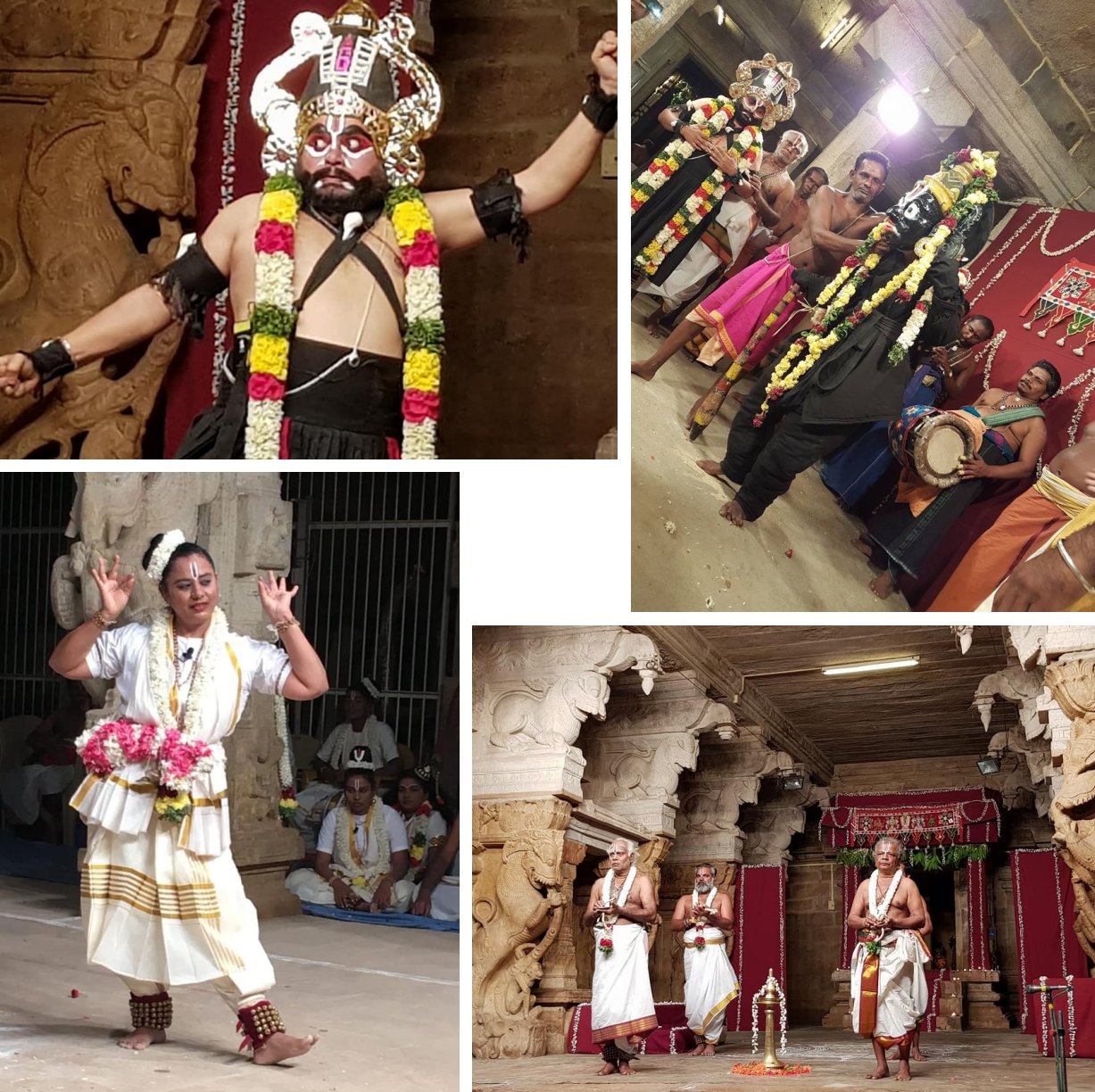 Kaisika Natakam It was in 1996 that theatre Professor S Ramanujam met me with Na Muthuswamy, founder of modern Tamil Theatre company KOOTHU-P-PATTARAI. I was alerted to the state of a defunct ritual theatre form that once flourished in my father's ancestral temple town of Tirukurungudi, in southern Tamilnadu. The theatre performance was called KAISIKA NATAKAM. That meeting started the research journey and the slow revival of a fascinating story of a humble devotee who triumphed over all social obstacles to win the blessings and favour of Lord Vishnu/Nambi. The script on a palm leaf manuscript runs for a 6 hour long story of caste, class and the power of faith and music. The purpose of the all night performance was to keep the devotees awake and entertained as they would have fasted all day. 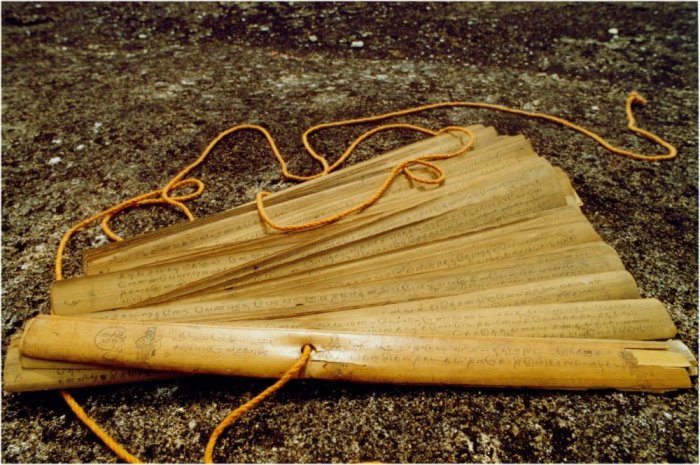 Palm leaf manuscript Written in conversational Tamil that is accessible to all, the elaborate and multi-pronged research involved numerous scholars, linguistic specialists, ethnographic students and theatre professionals. The artistes in the Tanjavur district were identified to help reconstruct the play and the first performance was in December 1999 inside the temple precincts with the idol of Vishnu/Nambi in attendance. In December 2020, at the height of the pandemic when the Nambi temple was shut, the performance was conducted with only the idol of Vishnu as the "chief guest!" This year, on November 23, 2023, thousands will gather at the shrine from across India and elsewhere, to watch and enjoy a 3 hour edited performance that includes music, dance, spoken word, and worship. As the chief patron of this revival project, it is a momentous milestone in my artistic graph. From an audience of 50 people in 1999 to over 3000 today, the temple itself has become a bustling core of activity and worship. I remember with gratitude the pioneering efforts of Professor Ramanujam and Guru Herambanathan Bavupillai, without whose dedication the 25th event would not have become a reality. Both are not with us but their spirit guides all the artistes and myself. To be able to steer this major cultural revival process for 28 years and bear witness to a milestone event has been a huge privilege and a blessing. It has also been an eye opener for me to keep my urban impatience on hold while the gentle pace of the theatre performance unfolds over 3 hours in the midst of rapt and engaged audience. No city slick entries and exits or clean lines were needed here. Just an implicit trust in the story, its purpose and the total involvement of the actors and devotees. The annual re-enactment of KAISIKA NATAKAM from 1999 has been a visible and palpable example of the power of FAITH! # NEW YORKERS LOVE DANCE 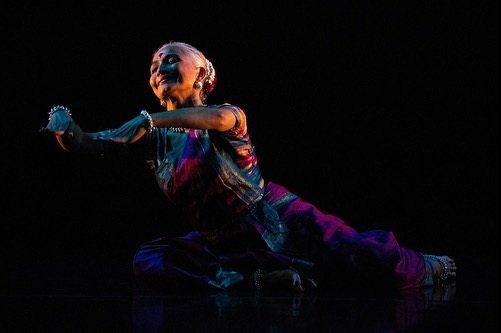 Bijayini Satpathy I may have missed the changing of the leaves during my recent visit to NYC, but I attended 2 evenings of FALL FOR DANCE at the City Centre. Watching the controlled and exquisite movements of Bijayini Satpathy performing SITAHARAN was a treat. In the triple bill evening, which is the hallmark of this popular dance event, Bijayini, accompanied by a 4 member musical ensemble, seamlessly shifted from the characters of the deer/Maricha, vulture/Jatayu, Ravana, Lakshmana, Sita and Rama. With no announcements, except for the cheerful introduction by the centre's director, the audience watched the Odissi artistry without knowing the narrative. The applause at the end was enthusiastic though somewhat muted in comparison to the rousing ovations received for the following two performances. The breathtaking finale was the Brazilian contemporary dance group from São Paulo called GRUPA CORPO. Undulating spines, a stunning set with black pods where the dancers disappeared to catch their breath before their next entry and nonstop high energy movements had the entire audience holding their breaths. The eruption of applause and standing ovations, accompanied by loud hoots by dance students in the rafters was a fitting finale to the 10 day dance event that is a shining example of how a city embraces the art of dance from around the world. What struck me were the concise programme notes in a compact printed brochure. For SITAHARAN, Bijayini credited Guru Kelucharan Mohapatra for the original choreography and Protima Gauri for the Reimagination. Music was also credited as an adaptation from the original score. The date of the premiere of the work when she was a principal dancer with Nrityagram was mentioned (1997). This is the point I have encouraged dancers to think about seriously. Dating a work. Even if you are performing an Andal Pasuram or a Meera Bhajan, you can mention composer/century. Music composer. First date of premiere with Guru / Choreographer who first taught the piece and then mention REIMAGINED by... This establishes the timeline and the historicity of the piece and gives the critic and the audience a reference point of how far the composition has travelled with the particular artiste. #COPYRIGHT -WHO OWNS WHAT? While the issue of COPYRIGHT continues to confuse many performing artistes, there are several ways to protect creative work with the access to social media and the various tools currently available to document the entire process from ideation and conception to creation and final production. The key is to document, photograph, write down, film and e-mail any discussions about the creative process or choreographic choices immediately after or during the interactions. Of course, having an IP lawyer to consult helps but in most cases, there are steps each artiste can take before stepping into court which is the last recourse. Importantly, the right to adapt, reimagine, edit should remain with the performer/choreographer. For Indian conditions this is particularly useful since the same show is invited to hotels, parks, stadiums, theatres, private homes and schools. Each audience demands a shift in duration and aesthetics. This right must remain with the performing team. Acknowledging the collaborators and always crediting the original team of dancers is helpful. I have placed on record the 9 dancers who were co-creators with me for 7 months for the making of NAACHIYAR NEXT. Without their active participation and implicit trust in the process, the now widely acclaimed production would not have taken shape. INSPIRED BY is another useful credit to add since so many dancers are "inspired" by several performances they see. Unfortunately, in many instances, the original ideas are blithely "lifted" without any credit. The NARTHAKI and my personal INSTAGRAM handles have carried some specific suggestions for performers to get started on this issue with a 10 point note to protect the choreographic, creative and collaborative process. Interested readers can access the posts on @NARTHAKIOFFICIAL and @anitaratnam.official. Copyright should not confuse or intimidate anyone. Most matters can be handled by the individuals themselves with a clear understanding of roles and responsibilities without going to court. #THEATRES BY CREATORS When Veenapani Chawla designed her Adishakti theatre in Auroville, I knew that it would be artist friendly. Performing there and at NATARANI in Ahmedabad have been wonderful experiences. Similarly at the AKSHARA theatre in New Delhi, a passion project of actor Jalabala Vaidya. All three spaces have backstage and green room space designed to combat claustrophobia that is caused by so many Chennai auditoriums. RANGA SHANKARA in Bengaluru is another gorgeous space as is PRITHVI THEATRE in Mumbai. Now lighting designer Charles has created MEDAI in Bengaluru, Shijith and Parvathy have opened SAKHI in the outskirts of Chennai and Parshwanath Upadhye is building his dream theatre in Belgaum, Karnataka. Contemporary dancer and founder of the successful ATTAKKALARI company Jayachandran Palazhy has a multi crore complex for the arts planned in Bengaluru. With Sanjoy Roy of Teamwork Arts, New Delhi, being named in the list of 100 MOST POWERFUL PEOPLE in India by HELLO magazine, this seems to be a good time to focus on the positions of Arts Management and Arts Curation as an income generating skill. We are tired of middle aged, unqualified men and women who are accountants, hospitality managers, IT specialists and MBA corporates running the music and dance sabha system. Their lens is provincial and does not take the time to investigate and pick the new generation of performing arts talent. Cultural mapping is what national academies like SANGEET NATAK should be investing in. An ARTISTIC DIRECTOR - separate from the Choreographer and Producer - should become the norm for performing arts groups. Audience development, upskilling for choreographers, gurus, and money management tools - there is much to be done to pluck dance and music out of the cottage industry mentality that persists in India. It will be disappointing if the new generation of dancer/presenters continue to practice the casual and sloppy attitudes of the past. Quality AND Commerce can co-exist! #NEW CONVERSATIONS FOR FRESH PERSPECTIVES 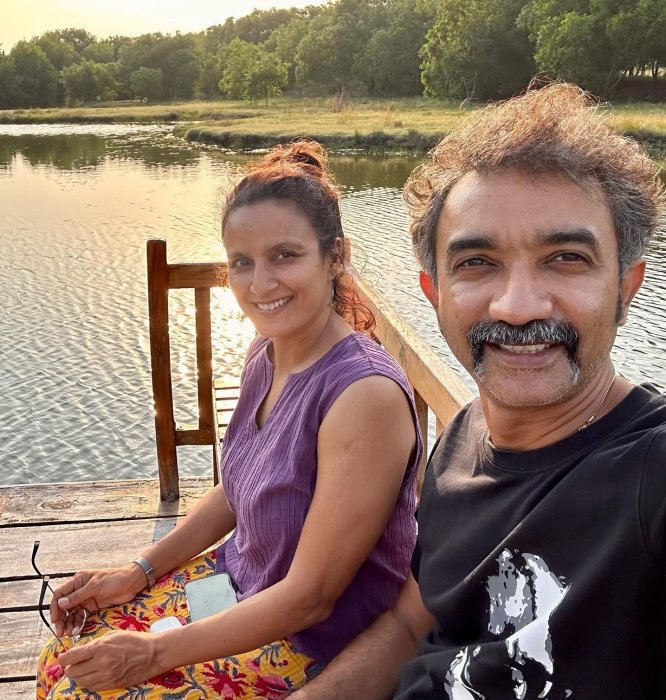 Satyajit and Anupama I was able to listen in to an interesting online session - GATHERING PERSPECTIVES - ideated by Bharata Kalanjali's Satyajit and Anupama. It was an intimate event where professional dancers shared their ideas and perspectives freely. Among some of the takeaways were:
#CARNATIC SOUNDSCAPES Have you noticed a significant common factor with three artistes? Bijayini Satpathy, Akram Khan and Zakir Hussain? All three performers have inducted Carnatic trained musicians and percussionists into their core ensemble. Why would Odissi, Kathak and Hindustani music leaning styles even look at the Carnatic transitions? It goes much deeper than the more superficial observation that these artistes are looking for a "GLOBAL APPEAL". All three already had them before these musical inclusions. BC Manjunath has sparkled in Akram's performances ever since I saw him in the Flamenco collaboration. His performance for XENOS was outstanding with the spoken KONAKKOL and syncopated percussions adding depth and mood to the brooding performance. Singer Bindhumalini is a cross over performer, whose voice range soars in Carnatic, folk and Hindustani traditions. But her Carnatic music training is clearly audible in her vocalisation for Bijayini. However, it does help to open up the curvilinear form of Odissi and has given Bijayini what she quotes as "my new sound" for her dance experiments. As for the "rock star" Selva Ganesh, it is his father Ghatam maestro Vikku Vinayakram who helped Zakir Hussain ground his playful rhythms into a more exciting and complex format. Vikku Sir's genius and Zakir's playful artistry made for a beautiful chemistry and now son Selva Ganesh carries forward the collaboration as the musical ensemble tours to worldwide acclaim. In reality, it is only Bharatanatyam that is ready to experiment with musical styles. Tabla, clarinet, trombone, cello, trumpet, harmonium, piano, guitar, jimbay, cajones and the didgeridoo have all been used now and then to mostly positive responses. I do not see the same spirit of pan Indian cross cultural aural adventures happening in other Indian dance styles. #DUSSEHRA & A NEW WINDOW FOR LEARNING In October we saw magnificently creative DURGA PUJA pandals erected in several cities which then became a stage for numerous junior dancers and musicians. An excellent way of getting young students accustomed to crowds, lights and the experience of a performance! Also in October was the annual ritual of Vijaya Dasami, Dussehra in North India. It is the day when eager parents and hopeful students enter the portals of dance and music schools. It is a life changing moment, when a young mind is opened to the possibilities of imagination, focus, discipline, memory development and the limitless possibilities of creativity. However, transactional the relationship has become today and although many dubiously trained youngsters are turning into teachers, we must not forget the original spirit of VIJAYA DASAMI. The first meeting of Guru and Sishya that is very special. Yes, it is a sacred moment. While the act of falling and touching the guru's feet for blessings and carrying large plates of fruits and gifts to the Guru/Teacher still continues, I would like to remember my own moments when my gurus told me that touching the feet of the ART was far more important than touching theirs! Every Vijaya Dasami, wherever I was in the world, my mother would send a small token of gratitude to my gurus - Rajee Narayan, Adyar K Lakshman and Neila Sathyalingam. I remember them with respect and gratitude for the invaluable gift of dance that they gave me. All 3 of my gurus were NOT performing artistes when they taught me and there is a huge difference with the scene today. While the business model for dance teaching has come to the fore more and more, fueled largely by the interest from the diaspora, today's "menu sheet" of charging $300 for a Tillana, $500 for a Varnam, $250 for a Padam is a sharp reality of how commercial the entire classical dance scene has become. # HERE SHE COMES - YET AGAIN! If DIVERSITY, EQUITY and INCLUSION are the keywords for the times, then why is an English play about hereditary artistes featuring only upper caste performers being staged? Did the Chennai based director, playwright and actors of KAMALAKSHI not receive the note about how out of step they are with the current discourse? The MADRAS PLAYERS theatre group's rule of only mounting English language plays made for an awkward and stilted TAMLISH accent which many in the audience felt was forced. I did not attend the performance but heard that the house full crowd seemed to enjoy the production. Unanimous comments of praise came in for the gorgeous set designed by our longtime collaborator Victor Paulraj and his Studio Seven team. A glib assumption of claiming to know the complex world of hereditary artistes is in itself problematic. I myself have had to unlearn and relearn many closely held ideas and wonder why there was no attempt at creating diversity in the casting of the play. The DEVADASI has been marginalised and silenced for decades through so many versions of writing, cinema, dance and theatre. Now, a play like KAMALAKSHI could once again polarise opinion and fill the pages of X with acerbic comments! Written by Sujata Vijayaraghavan, the chief curator of the Music Academy dance festival, and directed by PC Ramakrishna, an acclaimed theatre actor turned director, KAMALAKSHI features renowned musician Sikkil Gurucharan in a key role and dancer Sumitra Nitin (Sujatha's daughter) as the hereditary dancer. Will the audiences recognise the disconnect between subject, actors and society? Will KAMALAKSHI generate a healthy discourse or become fodder for caste baiting? # HYDERABAD IMMERSION PROGRAMME 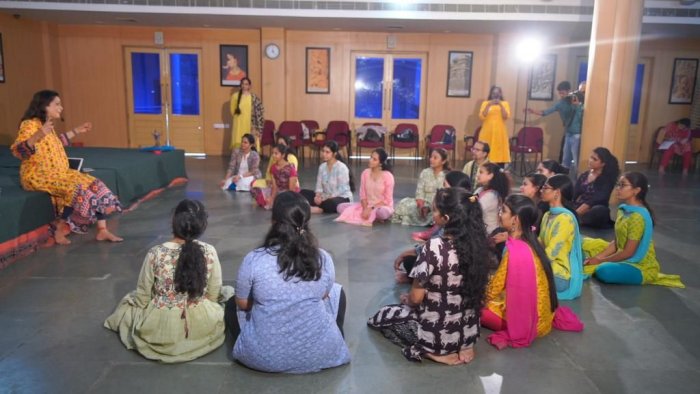
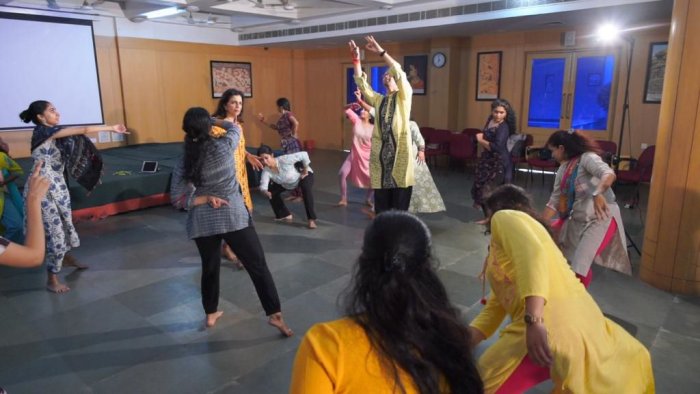
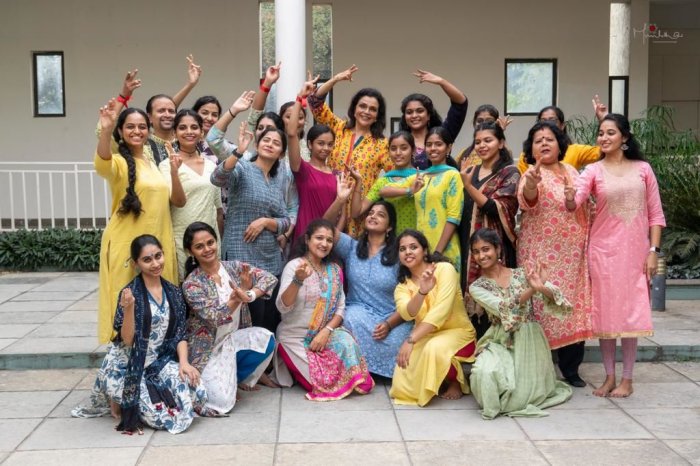 My interest in connecting with the younger generation of dancers led me to a meeting with Sravya Subramaniam, a Kuchupidi dancer/graphic designer from Hyderabad. On her urging and efficient organisation, I plunged into an all-day immersion with 25 eager dancers. Here I was, without the accepted business model of ITEM TEACHING, hoping to engage these young minds and bodies in the exciting journey of PROCESS over PRODUCT. The long day was divided into several sessions that punctuated movement exploration and straight talk about what it means to be a professional dancer today. Ages ranging from teenagers to dancers in their late 30s, I found that even the online students were engaged in simple exercises of movement invention and reimagining traditional tropes. Hyderabad is a warm and welcoming city and the media has always supported my work. The long day came to a rousing close with multiple questions about my art, my life and yes - this platform NARTHAKI. I only realise the great value of this portal when I leave Tamilnadu. The respect and trust this brand has created over 3 decades is worth building on - however slow the improvements seem to be. #NARTHAKI PODCAST & MORE We are coming to you as a podcast very soon! For all those commuters and ear phone/air pod owners. You can listen to my monthly musings on the global world of Indian dance is landing on the sound waves. For now, you can listen to the October edition on my YOU TUBE channel @anitaratnam. Let us know what you think and wait for the Podcast launch! Meanwhile, we are starting a series called NARTHAKI RECOMMENDS. A book, a film, a show, a podcast, a social media handle - something we feel you would be interested in. We begin with a moving research film called SHE DANCES IN APRIL by dance producer Farooq Chaudhry. #KARNA KAVACHAM A piece of advice for the younger generation - or perhaps a suggestion to prepare for the season ahead! What one needs is to develop a thick armour plate of protection from haters and naysayers. Barbs, insults, slurs and ignorance become arrows, stones and bullets that need to be deflected so as to not pierce our psychological mind screen. For performers who are coming into the India cultural season with new ideas and perhaps even a new evening length work, you must all be prepared like the anti-hero of the MAHABHARATA. Always wear a protective psychic armour. KARNA was invincible as long as he wore the golden armour and earrings gifted to him from birth by his father SURYA, the Sun God. His own mother KUNTI requested him to remove it so that her five sons could win the Great War. A mother knowingly asking her eldest son to accept defeat and death! Life deals us many a blow, even from our own close inner circle, but on no occasion should we sacrifice our own KARNA KAVACHAM - that impenetrable chest plate that will protect us from negativity and hate. Poor crowds, tech flubs, costume malfunctions, ignored by organisers and reviewers, orchestra mood swings, even inclement weather - anything can happen during a performance. We ourselves may not be in top form. But if we do our best, decide to dance with joy AND wear that protective armour like a psychic shield then whatever is thrown at us will not hurt us. So, wear that KARNA KAVACHAM and step on to the stage! When the lights dim and the curtain rises, you are stepping into your world. Everything else falls away. Your spirit must become like a warrior. BOOM! It’s show time! Perform like it was your last breath! Celebrate every festival from diverse states - whatever brings you joy and your friends and family closer. When you burst or light fireworks this DEEPAVALI, please be kind to the animals around you. It is ironic that we call the special 1000 string fireworks THE LAKSHMI VEDI! The word VEDI in Tamizh also means BOMB. It is eerie that while fireworks are burst loudly in one part of the world to celebrate the vanquishing of dark forces, real VEDIS are killing many innocents in another part! Such is life! So. honour yourselves. The dancing body is the first and last site of personal democracy. Guard it. Take care of it. Nurture it. Cherish it. Until next time, Anita R Ratnam Chennai / Tirukurungudi anitaratnam.com Response * Well, Ramayan itself has been re-imagined and re-told. Do we consider Kamban or Tulasidas to have "polluted" Valmiki's Ramayan? Or question Kamban or Tulasi as to who gave them the right? Why should re-imagination be considered a distortion? Artistic license cannot be confused with distortion. Was the original Ramayan itself a distortion of what really happened? Who knows. As long as the original is acknowledged, a piece of art can be re-imagined based on the artiste's life experiences and contemporary world views. It would be suffocating to build walls around compositions. Artistes have every right to perform as is or re-imagine. Re-imagining will not make the original disappear. Hopefully, Keluda's original choreography is recorded and archived for everyone to see and enjoy his vision. If an artiste's work is re-imagined, I would tend to believe that the artiste will feel proud that her idea had germinated other thought processes. Like increasing citations of your work if I may use scientific parlance. I am a rasika and not a dancer and these are just my 2c. - Sumana (Nov 7, 2023) * I completely agree with Anita about the need, whenever possible, to specify details like year of composition, composed for whom, premiered by whom and when as elements completing the credits attributed to a specific composition, specially if the item has become a classic often performed from generation to generation. These informations would be useful building blocks in the construction of a performing art history of the last two centuries. What I don’t agree upon is the licence to ‘re-imagine’ a handed down choreography attributed to a specific choreographer. I consider this trend a very dangerous one. After some time we will not be able to enjoy a traditional choreography in its original form. The process of ‘re-imagining’ is limitless; it can go from converting a solo dance into a group, or changing few details which does not suit the specific dancer upto the extent to remaking the entire dance sequence utilising the same melodic and rhythmic structure. Who gives the right to anybody to intervene in the creative process of another artist? And would the same people who re-imagine be happy to see their own original creations ‘distorted’ or ‘re-imagined’ by somebody else? I am sure the guru-s who are no more and whose compositions are mostly utilised in this ‘re-imagination’ process would not at all be happy in seeing what has become of their so carefully taught and crafted creative endeavours. I am of the opinion that somebody else's dance creation should not be tampered with as we would not tamper with a Picasso painting or a Shakespeare sonetto. If we don’t agree with a particular composition let it be, don’t perform it, create your own but don’t pollute it. Let us respect each other's thought process. Coming back to the item under review, the Sita Haran one, I believe Protima was quite faithful to Guruji compositions and possibly must have handed down the same to Bijayini in its integrity so probably in this case the word ‘re-imagined’ may be misplaced. - Ileana Citaristi (Nov 5, 2023) Post your comments |